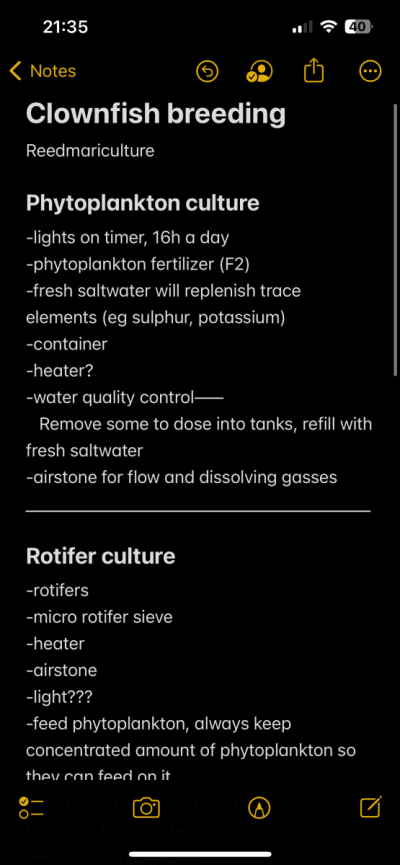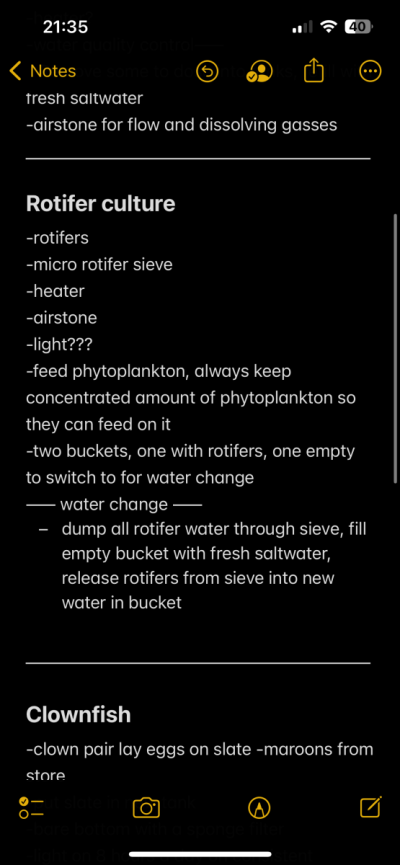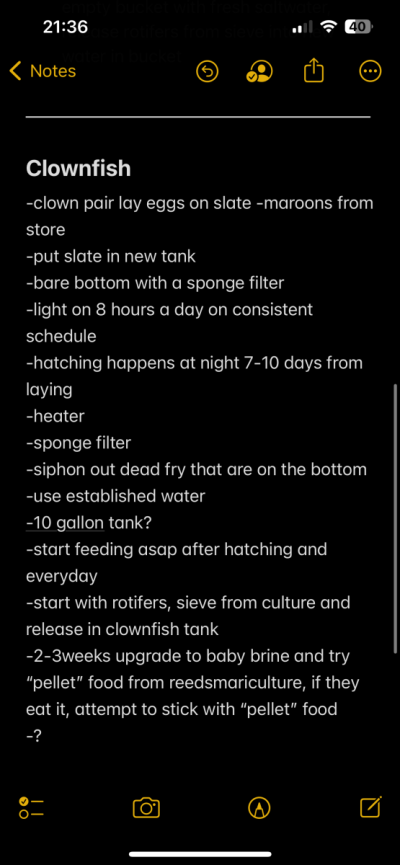i am an incoming junior in highschool and have an independent study period. I can get materials and equipment easily. I have quite a bit of experience in the hobby already. I am going to attempt to breed and raise clownfish soley for “educational” purposes so i dont mind doing the extra steps rather than skipping and using some easy work around like dosing a phytoplankton solution instead of culturing it myself.
(Edit: i have a pair of clowns that are laying consistently, and also have lots of connections so getting the eggs is a lesser worry, i am mainly concerned about raising the baby clown fry and keeping them alive, along with tips on rotifer and phyto culturing.)
I have a list written in my notes and i think its pretty thorough, but i hope somebody with experience in this or just anybody who notices or remembers something obvious that i missed gives me a reply. I left question marks on things im curious about or am not sure if i need or not. At the end of the list i dont know where to go from there.
Thank you!



(Edit: i have a pair of clowns that are laying consistently, and also have lots of connections so getting the eggs is a lesser worry, i am mainly concerned about raising the baby clown fry and keeping them alive, along with tips on rotifer and phyto culturing.)
I have a list written in my notes and i think its pretty thorough, but i hope somebody with experience in this or just anybody who notices or remembers something obvious that i missed gives me a reply. I left question marks on things im curious about or am not sure if i need or not. At the end of the list i dont know where to go from there.
Thank you!



Last edited:


















